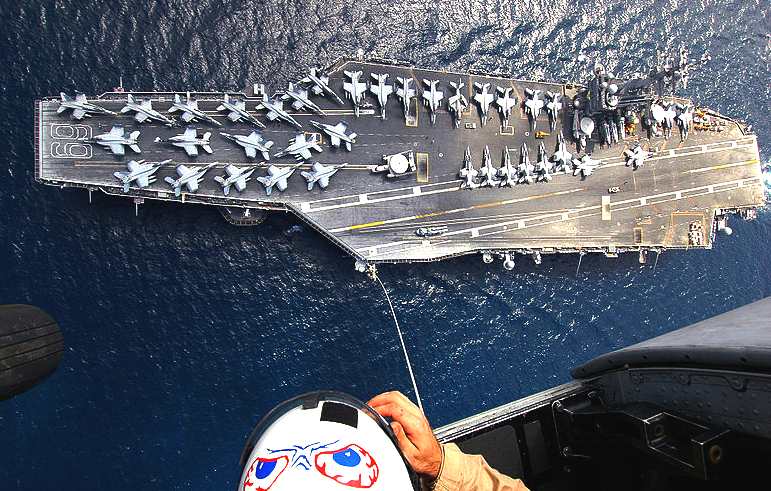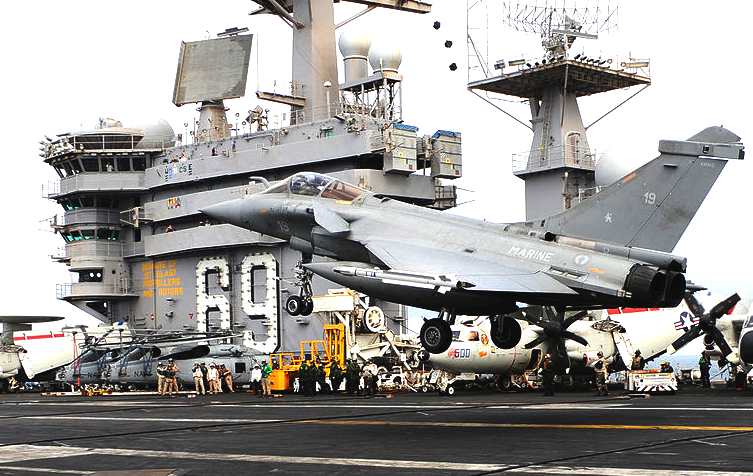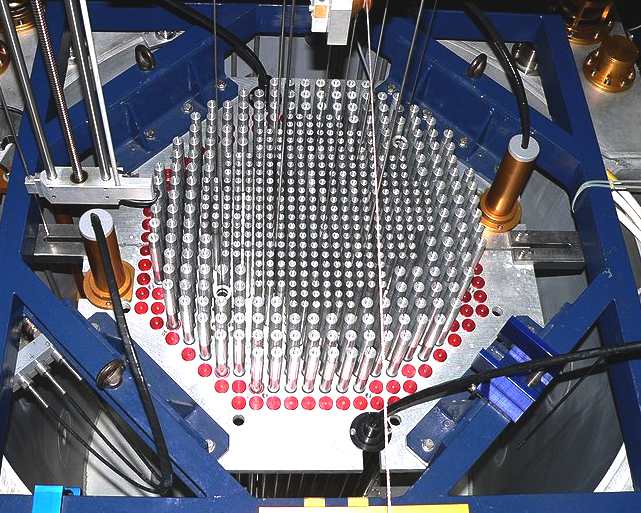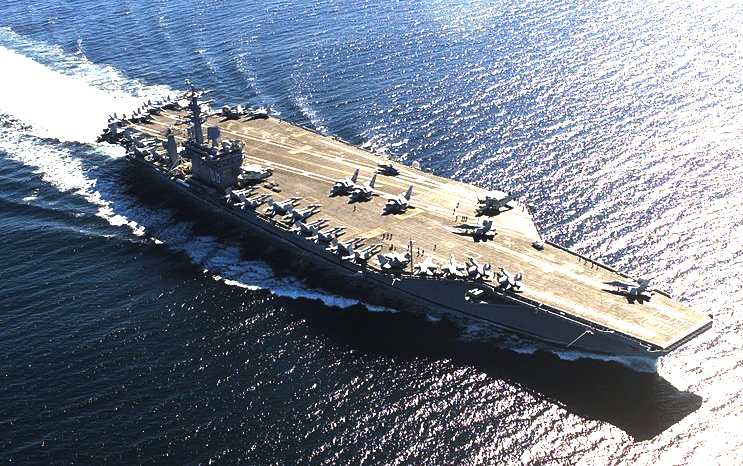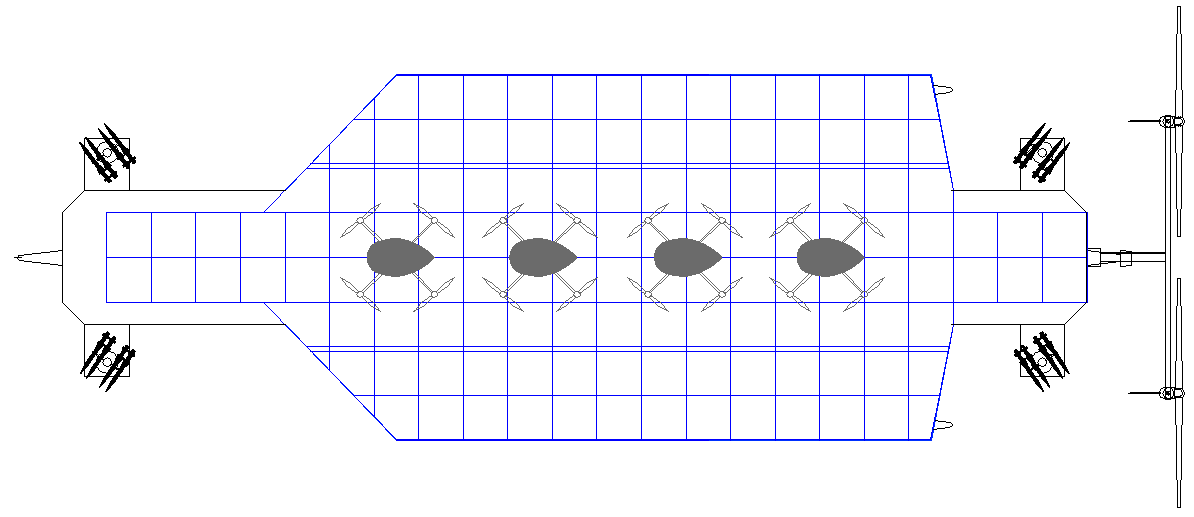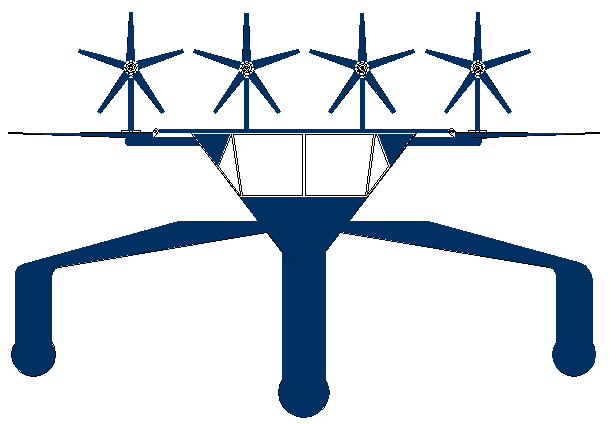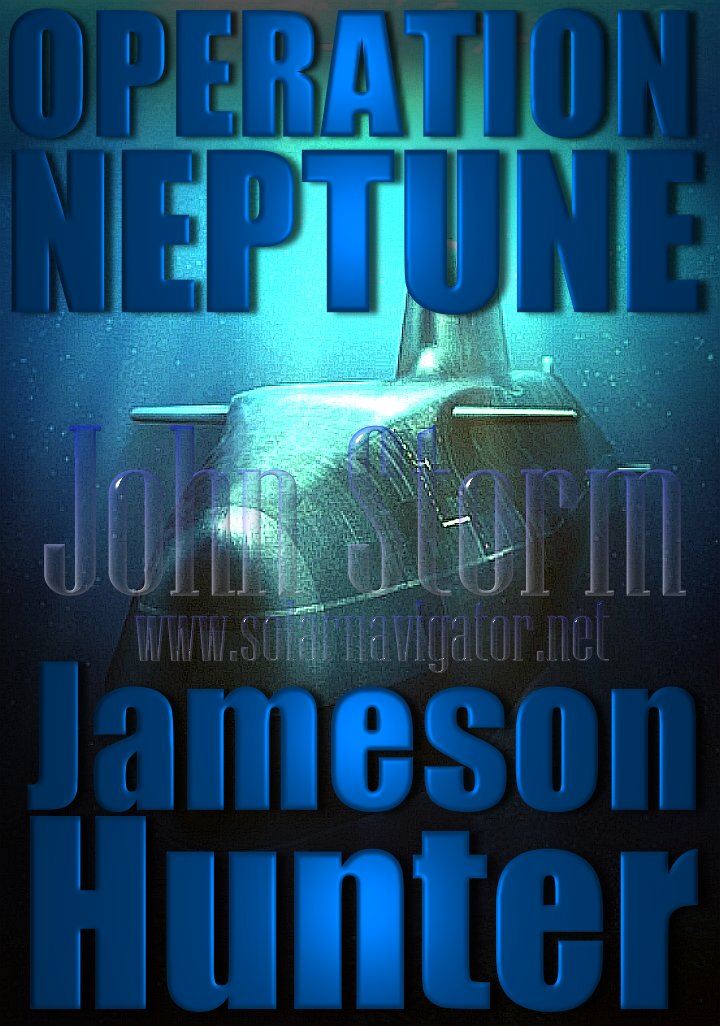|
USS DWIGHT D EISENHOWER - Nimitz Class Aircraft Carriers
|
|
|
The USS Dwight D. Eisenhower (CVN-69) ("Ike") is an aircraft carrier currently in service with the United States Navy. Commissioned in 1977, the ship is the second of the ten Nimitz-class aircraft carriers currently in service, and is the first ship named after the 34th President of the United States, Dwight D. Eisenhower. The vessel was initially named simply as USS Eisenhower, much like the lead ship of the class Nimitz, but the name was changed to its present form on 25 May 1970. The carrier, like all others of her class, was constructed at Newport News Shipbuilding Company in Virginia, with the same design as the lead ship, although the ship has been overhauled twice to bring her up to the standards of those constructed more recently.
PRESIDENT EISENHOWER
Dwight David "Ike" Eisenhower (October 14, 1890 – March 28, 1969) was the 34th President of the United States from 1953 until 1961. He was a five-star general in the United States Army during
World War II and served as Supreme Commander of the Allied Forces in Europe; he had responsibility for planning and supervising the invasion of North Africa in Operation Torch in 1942–43 and the successful invasion of France and Germany in 1944–45 from the Western Front. In 1951, he became the first supreme commander of
NATO.
DINOSAURS & EXTINCTION
Aircraft carriers are an outdated form of battleship that superpowers like to parade about the ocean to demonstrate affluence, in the process polluting the planet massively. The twin nuclear reactors of a Nimitz class carrier represent a huge risk should the vessel be targeted for destruction.
The new US Gerald R Ford class carrier adds to the risk of nuclear debris from sinking. Most navies have retired this class of warship with no plans to commission another. A few navies are newly dabbling with self-build to discover the tremendous cost causing delays to completion. Only the US is investing seriously in replacing the Nimitz class so that they can continue to thumb their noses at poorer less advanced nations like playground bullies.
These days it only takes one torpedo, or one cruise missile to sink a large warship. The larger the conventional warship the more staggering the loss of life - and the blow to the nation concerned. It's a high price to pay for a bit of ocean swagger.
LINKS & REFERENCE
http://en.wikipedia.org/wiki/USS Nimitz_class_aircraft_carrier http://en.wikipedia.org/wiki/USS_Dwight_D._Eisenhower_%28CVN-69%29 http://en.wikipedia.org/wiki/USS_Enterprise_%28CVN-65%29 http://en.wikipedia.org/wiki/Gerald_R._Ford-class_aircraft_carrier http://en.wikipedia.org/wiki/Chinese_aircraft_carrier_Liaoning http://en.wikipedia.org/wiki/Russia Admiral_Kuznetsov-class_aircraft_carrier http://en.wikipedia.org/wiki/HMS Invincible_class_aircraft_carrier http://en.wikipedia.org/wiki/Clemenceau_class_aircraft_carrier http://en.wikipedia.org/wiki/Spanish_aircraft_carrier_Principe_de_Asturias http://en.wikipedia.org/wiki/Spanish_ship_Juan_Carlos_I_(L61) http://en.wikipedia.org/wiki/Thai HTMS_Chakri_Naruebet http://en.wikipedia.org/wiki/Italian_aircraft_carrier_Cavour_(550) http://en.wikipedia.org/wiki/Japanese Hyuga_class_helicopter_destroyer http://en.wikipedia.org/wiki/S Korea Dokdo-class_amphibious_assault_ship http://en.wikipedia.org/wiki/Indian Vikrant-class_aircraft_carrier http://en.wikipedia.org/wiki/Dwight_D._Eisenhower
SUBMARINE INDEX
Alvin DSV - Woods Hole Oceanographic Institution HMS Astute 1st of Class HMS Vanguard- Trident INS Sindhurakshak - explosion & sinking Lusitania - Torpedo attack Nuclear submarines lost at sea Predator - Covert submarine hunter/killer Seawolf - Autonomous wolf pack deployment of Predator mini-subs Torpedoes - UUV anti submarine weapons U20 - Kapitan Leutnant Walther Schwieger USS Bluefish WWI submarine USS Bluefish - Nuclear submarine USS Jimmy Carter - Seawolf class fast attack nuclear submarine USS Nautilus - 1st nuclear submarine & subsea north pole passage
The world's first ever solar powered aircraft carrier, showing a squadron of 4 4.7m drone quadcopters. This ship could easily carry 12 birds. This is also, probably, the world's smallest ever aircraft carrier. A 1/20th scale model of this vessel will take to the water in 2015 for some naval wargaming fun.
AIRCRAFT CARRIER INDEX
Cavour - Italy Chakri Naruebet - Thailand Clemenceau - France Dokdo - Republic Korea Gerald Ford Class - USA Hyuga - Japan Invincible - UK Kuznetsov - Russia Liaoning - China Nimitz - USA Principe de Asturias - Spain Queen Elizabeth - UK Vikrant Class - India
WARSHIPS
Bismarck - Battleship - Germany Type 23 - Duke class frigate - UK Type 26 - Global combat ship - UK Type 45 - Daring class destroyer - UK Electric prototype - USA
The Bluefish™ platform in a modified form is suitable for adaptation to a robotic battleship as a replacement to the Type 45 destroyers and Type 26 combat vessel. The Wolverine ZCC™ in its ultimate form may carry 4 x Tomahawks, 30 x SAMs, 2 x 12.75" and 2 x 21" torpedoes + an ROV or minisub. Not bad for a 50 ton battleship that needs no crew and runs on clean energy from nature. A zoned network of these ships can police international waters, attack and sink enemy aircraft carriers and submarines in formation and shoot down aircraft that present a potential threat to national security. The development of such ships represents an opportunity for future exports and defence energy reductions.
FICTION Operation Neptune - An advanced nuclear submarine is hijacked by environmental extremists intent on stopping pollution from the burning of fossil fuels. The extremists torpedo a number of oil wells as part of a campaign to cause energy chaos, with bigger plans to come. If you enjoyed Under Siege or The Hunt for Red October, this is a must for you.
|
|
|
This website is Copyright © 2014 Bluebird Marine Systems Limited. The names Bluebird™, Bluefish™, Solar Navigator™,Blueplanet Ecostar BE3™, Utopia Tristar™ and the blue bird and fish in flight logos are trademarks. All other trademarks are hereby acknowledged.
|
